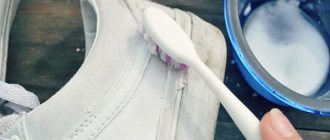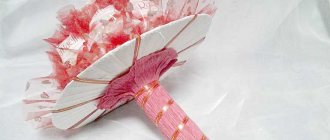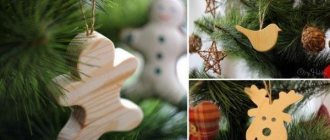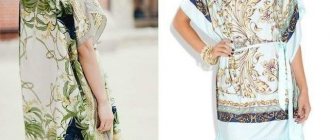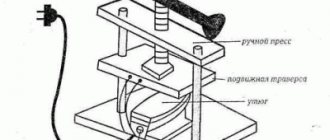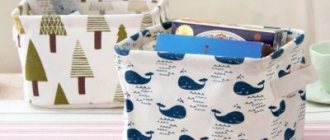An original solution for the creative ideas of wood craftsmen is to create decor or souvenir products using birch burl or souvel. These materials differ from other wood in the uniqueness of their cut pattern.
A birch burl is a growth on a tree, from which thin tree branches protrude, with buds formed on them. It has a very high density, even higher than that of the tree trunk itself. The pattern on the cut of the burl is original and unique. Tree growth rings are intertwined with dotted inclusions and create a unique pattern.
Processing birch burl with your own hands is not easy due to the high hardness of the material. After processing, the product resembles malachite and is cast with mother-of-pearl. The color of the pattern is milky with black and brown shades.
Suvel grows on a tree due to its disease or damage and grows much faster than burl. This material is softer and more pliable than burl in processing. It has unique patterns reminiscent of marble, which are formed due to its position on the tree.
Wood suvel
Suvel is a growth on a birch or other deciduous tree that forms two or three times faster than the tree grows. It is most often provoked by a disease called wood cancer. The reason for its appearance has not yet been fully studied.
People call these formations woody bone. This name comes from the image on the cut, which repeats the patterns of marble, and in thin places resembles bone.
Often, ordinary people confuse burl or suvel with other formations. Most of all, caps are confused with chaga. The difference between chaga and burl on a birch is that chaga is not a growth, but a mushroom that grows on the trunk after its spores get into the damaged bark. Chaga can be cut from a tree using any available means, but the burl will be difficult to cut down even with an ax due to its high density.
Processing burl and suvel is a pleasure for woodworkers, although it is not an easy task. The burl is particularly difficult to process, but the patterns that are revealed when the material is polished are surprising in their uniqueness and variety.
Burl and suvel of birch are ideal for creating decorative products. Thanks to their original texture, there is no need to create carved patterns. Therefore, they are used to make integral crafts and decorations - everything that looks great in a polished state.
What is chaga?
If you've noticed a growth on a tree trunk, you're probably wondering what it is. In the case when the growths on the outside are black and irregular in shape, and the color of the inside is from brown to red, most likely it is a birch mushroom - chaga
.
It is able to settle on deciduous trees, for example:
- Rowan;
- Alder;
- Maple;
- Birch.
As a result of a pathogenic fungus entering the affected area of the bark, chaga begins to develop in the trunk of the plant. It looks like a comb-like growth with veins inside. Gradually it absorbs the tree and penetrates deeper into the trunk. It happens that chaga encircles a tree in a circle. As a result, it dies.
Chaga grows for at least twenty years and at the same time feeds on birch sap and beneficial substances found in the wood.
Unfortunately, such fungi often infect birch groves and deciduous forests en masse. However, in folk medicine they are highly valued. Based on them, decoctions, inhalants and other dosage forms are made.
They help well in the treatment of various diseases:
- Oncology;
- Women's and men's diseases;
- With weakened immunity;
- Problems with joints.
However, before you start collecting tree mushrooms, read the contraindications.
Texture
Burl and suvel of birch differ in their texture from any other wood. The unique patterns on the cut can be explained by the formation process.
Burl grows on birch for various reasons:
- A bud begins to emerge under the bark, but due to the hardness of the bark it cannot break through. Nutrients are supplied to the kidney, due to which adventitious buds are formed. Their development and inability to break through form a growth on the tree.
- Mechanical damage caused by humans, animals, insects or natural phenomena can also cause the normal development of the kidney to stop. But it strives for life, despite its deformation, and forms a new growth on the trunk.
- At the site where the bud appears, the tree devotes all its energy to the development of burl due to bacteria, fungi or late spring frosts.
Understanding the pattern of burl formation, which grows very slowly, but becomes larger over the years, we can assume that the pattern created by the growth of wood and adventitious buds will be truly unique. Burls grown on trunks have a more ornate and pronounced structure than those grown at the roots.
The growth rings are twisted and intertwined with the cores of the shoots. The pattern on the cut is not immediately visible. It only appears after the wood has been processed by sanding, polishing and toning. After processing, burl products have different shades and are cast with mother-of-pearl. The patterns resemble malachite.
Suvel has a structure that is different from burl, but unique and exquisite in its own way. The image on the cut of suvel resembles waves, stripes, spots or bends. This pattern is obtained due to the uneven formation of wood rings, due to tree disease or mechanical damage.
The smooth and soft surface of suvel is easier to process. Finished products made from this material amaze with their shine and variety of patterns, reminiscent of the surface of marble.
Blank
In nature, suvel is found much more often than kapa. Trees with such lesions can be found in deciduous or mixed forests located in both dry and swampy areas. It must be taken into account that cutting a suvel or burl on a growing birch tree can lead to its death. Therefore, after cutting down the material, it is necessary to cover the living layer with varnish.
On dead trees, the formations are already affected by rot and are not suitable for production. Therefore, finding a suitable material for the workpiece is not easy. It is better to do this in mid-autumn.
It is impossible to determine by the type of formation what it will be like in the cut. But the more crooked and tortuous the suvel and the more twigs on the burl, the more saturated the pattern will presumably be. Working with such material is more difficult, but more interesting.
It is quite difficult to cut down suvel and burl, the chains become dull quickly, so good sharpening of the tool is necessary. You can cut it with a hacksaw or bow saw, but this will require a lot of physical effort.
Birch suvel has a different texture when cut. It can be pronounced or completely invisible. Suvel with a texture that is difficult to see usually has higher strength. But you will never guess by the appearance of the growth that there is a cavity or a beautiful ornate bend in it.
Where to find?
Birch burl is more common than other tree species, so finding it is quite possible. It is best to do this in mid-autumn. The optimal search location is a birch grove; you can also go into the forest, although things will be a little more complicated there, since you will first need to find the birch trees themselves. Burls can often be found in swampy areas. However, it must be taken into account that cutting down the growth can cause the death of the tree.
In addition, if a large cap is required, you need to take care of transport in advance, since even carrying 50 kg in your hands will be problematic. You will also need a special tool, for example, a bow saw, since the burls are usually very hard and it will not be possible to cut them down without some effort. In view of all these subtleties, experts recommend looking for burls not in the forest, but in sawmills. The workers there are only interested in wood, so all the growths are sent to waste.
You can also find caporoots at logging sites, which you definitely won’t be able to find in the forest on your own.
Drying
To ensure that the workpiece does not delaminate or collapse while drying naturally, it is necessary to dry it gradually. There are several ways to dry suvel or birch burl at home.
Here are the two most popular ones:
- Boiling in water with table salt. This method is suitable for small pieces of birch. The workpiece is cleaned of all unnecessary growths, rags and dirt and placed in water, which should be 2 cm higher. Per 1 liter. You need 2 tbsp of water. salt. Then, resinous sawdust must be added to the water, which will ultimately give the product an ocher tint. It is necessary to boil for 6-8 hours, then carefully remove and rinse the workpiece under running water. After two days, the cooking procedure must be repeated, but reduce the boiling time by a couple of hours. After two days, the boiling process must be repeated, if necessary, reducing the time by another couple of hours. After this, remove from the boiling water and peel off the remaining bark on the hot workpiece. After 2-3 weeks the material is ready for processing. This method is only suitable for small workpieces!
- Larger pieces take longer to dry. Under no circumstances should you bring the workpiece into a dry room when drying at home. Prepared cuts need to be coated with paint or drying oil. If dried properly, they dry within 2-3 months. The temperature should be about 10-15 degrees. Then they can be removed indoors, where they will dry completely and be ready for processing in about six months.
"Steaming" method
It is important that it is necessary to cut down the growth only during the dry season, throughout the year (this is the period from late August to early September).
- The growth needs to be cut down. The process is performed with a sharp saw. The object resembles a stone, it will take a long time to saw. There is no need to peel off the bark. After this work, do not forget to lubricate the wood with paint to stop the flow of juice.
- The second step will be to find a container for boiling. It is advisable to select an unnecessary pan. After all, during the process, different consistencies and resins are released, due to which you will have to throw away the dishes. Next, you throw the mined specimens there. You need to pour enough water to cover everything by two centimeters (2 cm). As the liquid boils and evaporates, add liquid a little at a time.
- The third part will be extracting and adding layers to our soup. The task will be to bring it to triper salinity. This is necessary for this. to remove all available moisture from the item being processed. If you live by the sea, pour in sea water. It will be faster this way.
- To reveal the structure, give strength, and a good smell, you need to add pine or spruce shavings to the container. They contain resins that the processed parts do not have. In addition, we will give the color ocher-brown, pink-yellow.
- In the process, the water will evaporate. Add to liquids as needed. It is added exactly enough until a little more than it boils away. As a result, we get a reddish broth. Drain the broth, as it will be impossible to wash it.
I have tried to briefly describe the main part of the boiling, the important factors of which were the presence of salt and resin. See the photo below.
Below I will publish the drying process at a fast pace. It is not difficult, but it requires attention. The result exceeds all expectations.
Treatment
Processing birch burls with your own hands is a creative and interesting activity for any specialist who is interested in woodworking. Not everyone can dry birch burl at home. To do this, you need to practice on less valuable wood.
It is necessary to take into account that the preparation for deep dishes from suvel or burl is done even before drying. That is, the required recess is cut out and given a pre-designed shape. Then the workpiece is dried, after six months it can be taken out and refined to perfection.
Application of mouthguard and suvel
Thanks to proper drying, beautiful and unique crafts from birch burl are obtained. The most popular products from burl and suvel are dishes made by craftsmen, wooden jewelry, various figurines, stands, boxes, souvenir jewelry, earrings, bracelets, etc.
Such products smell like wood for a very long time and do not lose their appearance, even with prolonged use. Only a true artist and master of his craft can create a real work of art from a simple piece of wood!
What kind of crafts do they make?
The list of products that can be made from burl is incredibly huge. Let's take a look at which items will be the most popular:
The resulting crafts, with good care, last for many years and smell deliciously like wood. They will look beautiful in both modern and classic interiors of houses and apartments. Wooden crafts will fit no less effectively into the design of the local area. With skill and imagination, a wood craftsman will be able to make a real work of art from a large burl: a polished tub sparkling in the sun, an artificial stump, a garden gnome, a goblin, and any other craft appropriate to nature.
You can combine birch burl with materials such as metal, bone, and mother-of-pearl.


